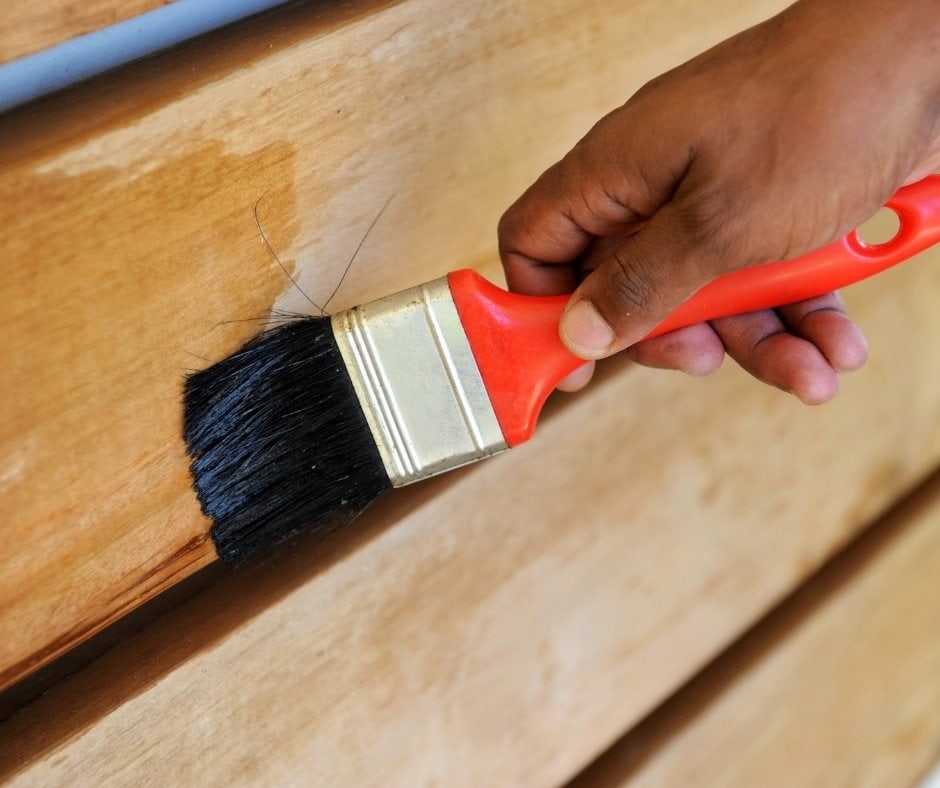Despite its name, rubberwood isn’t rubber or even rubbery. It’s good, solid wood. It’s easy to work with and easy to stain and is increasingly popular with furniture makers. It’s also plentiful.
The question is whether furniture made from it is good. Being easy to cut with a power saw is one thing, but if it doesn’t hold up then is it worth having around the house.
We put together this handy little introduction to rubberwood furniture and how much value it offers. We hope you find it useful.
In This Article We'll Discuss
Is Rubberwood Furniture Good or Bad, Pros and Cons?

The question of whether rubberwood furniture is good or bad is really in the eye of the beholder. When choosing furniture, it’s important to know whether the strengths of it match well with where you plan to use it.
So, in deciding whether rubberwood is the right wood for your furniture, let’s take a look at its pros and cons.
PROS
It’s durable hardwood. That might seem a bit counterintuitive since the wood has the word rubber in it. It’s not bending like rubber, but it is a relative to the maple tree. That makes the wood strong and dense. So, it’ll stand up to some real punishment.
It’s also cost-effective. Rubberwood isn’t a byproduct of some other process, Rubberwood trees can produce that latex for approximately 25 years, after which they need to be retired. As long as mankind needs rubber, rubberwood will be available and affordable.
It’s easily stained. While the wood itself is a base light brown, it takes staining well. So, its base color works for it, because it’s a lot easier to make something light look darker than it is to make something dark look lighter.
It’s great for furniture. When properly treated, it is resistant to warping. Warped wood makes for horrible, uncomfortable furniture. It also resists cracking and shrinking, so it’s a nice stable wood for furniture.
CONS
It’s prone to warping, shrinking, and fungus if improperly treated. Probably by the time it gets to the consumer market, it will have received a proper treatment. If you buy rubberwood furniture, you might want to inspect the wood to double-check that.
It can produce an allergenic response. If you have allergies to latex, rubberwood is the tree that produces it. There have indeed been verified reports of rubberwood triggering allergic responses.
It readily absorbs moisture. Because of that, the lifespan of rubberwood furniture is a lot lower if placed outdoors or in rooms with lots of moisture. It’s a good wood to keep indoors and where things tend to be dry.
It isn’t as sustainable as advertised. Rubberwood has a reputation as a green-friendly wood because it is a retired plantation tree rather than trees cut down from a rainforest. Those plantations are often sited on former rainforest land and many have questionable practices.
How Durable is Rubberwood Furniture?
When people see the word rubberwood, they assume that it’s wood that is part rubber. That’s not true. Rubberwood trees produce latex. Aside from that, they are regular trees.
Rubberwood is, in fact, a relative of the maple tree, which makes it a hardwood. That means it’s among the densest, strongest woods around. Hardwoods are pretty durable. Placed properly, where it is dry, rubberwood furniture can last a long time.
If placed where it gets wet or damp, however, it can break down quickly. That’s because rubberwood readily absorbs water. That water will cause it to swell and break down.
Rubberwood vs. Solid Wood

It’s important to remember that rubberwood can be solid wood. Solid wood just refers to wood that is used as tree lumber.
The opposite of solid wood is engineered wood, which is wood that is put together from pieces of solid wood. Think about the difference between a 2×4 and plywood. The 2×4, which is solid wood, is a single piece of wood. The plywood, which is engineered wood, is different layers of solid wood.
Rubberwood mostly comes from trees that reached the point where they no longer produce latex. So, they need to be cut down and used for something.
For years, it was used in a lot of engineered wood because preparing it for use as solid wood required thoroughly treating it to prevent damage from fungus and insects and natural warping.
It has grown in popularity the last couple of years as a solid wood because the processes used to perfect them for use have gotten perfected. It’s affordable, but not cheap. It can also be a solid wood or an engineered wood.
Should You Buy Rubberwood Furniture?

We’re not here to tell you whether you should buy rubberwood furniture. We’re just here to tell you a few things about rubberwood and let you decide if it’s a wood that will serve you well.
At the outset, we’ll tell you that if you have latex allergies that you should probably avoid rubberwood furniture. There are known cases where it’s caused allergic reactions. If that’s you, probably avoid rubberwood furniture.
What we’ll tell you is that rubberwood is easy to treat, easy to work with, and easy to stain. Provided it was treated properly, it’s durable and is super easy to work with if you make your own furniture. It’s also affordable.
In addition to the allergy issue, rubberwood can warp and crack if improperly treated. If you buy rubberwood furniture give it a close examination to make sure that it hasn’t started to buckle.
If the furniture is expected to go someplace that is frequently damp, you may wish to consider a different kind of wood than rubberwood. It absorbs water easily and starts to fall apart.
Conclusion
Rubbertree wood is versatile and easy to work with when making wood. It’s easy to cut and accepts stain well. For budget-conscious consumers, it’s also a wallet-friendly option.
Of course, you’ll want to check over a piece of rubberwood furniture closely before purchasing it to make sure it hasn’t warped. Be aware, also, that rubbertree wood comes from vast plantations that contribute to environmental issues.
If you found this helpful, we’d love to hear from you in the comments below. We’d also invite you to share this article on your social media networks. There’s no telling which among your followers might have the same questions.

